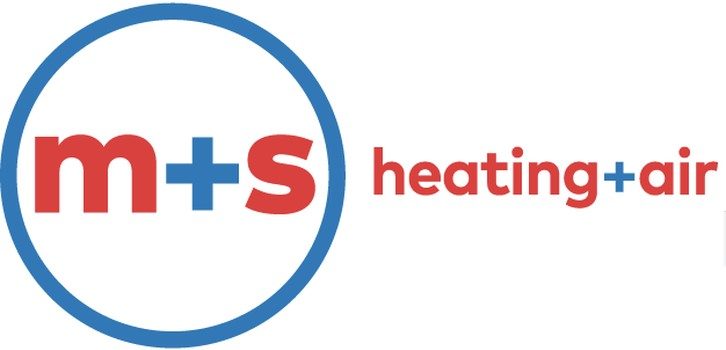
As summer approaches in Sparks, NV, temperatures start to climb, and so does the demand on your HVAC system. Proper maintenance and preparation are essential to ensure that your HVAC unit runs efficiently, keeps your home comfortable, and helps you avoid high utility bills and emergency repairs. In this post, we’ll walk you through key steps to prepare your HVAC system for the hot Nevada summer and help you understand why each step is so important.
1. Replace Your Air Filter
One of the easiest yet most impactful ways to prepare your HVAC system is by replacing the air filter. During summer, your HVAC system is likely to run almost constantly, so a clean air filter ensures optimal airflow. Dirty filters restrict airflow, causing your system to work harder to maintain desired temperatures. Not only does this strain your system, but it can also lead to higher utility bills and poor indoor air quality.
Experts recommend checking your air filter every 30 days during the cooling season and replacing it at least every 60 to 90 days. If you have pets, allergies, or live in a dusty area, you may need to replace the filter more frequently.
2. Schedule a Professional Tune-Up
A professional HVAC tune-up is essential before the summer heat fully sets in. HVAC technicians have the experience and tools needed to identify any potential issues before they become major, costly repairs. During a tune-up, a technician from M&S Heating and Air Conditioning will:
- Check refrigerant levels and top them off if needed.
- Clean and inspect the condenser coils.
- Check all electrical connections and components.
- Inspect the blower motor and belt.
- Lubricate any moving parts.
- Test the thermostat for accuracy.
Regular tune-ups extend the life of your HVAC system, ensure energy-efficient operation, and reduce the likelihood of unexpected breakdowns. With Sparks’ hot summer days, the last thing you want is to be caught without a working air conditioner.
3. Clean Your Outdoor Unit
The outdoor unit (also called the condenser or compressor) plays a crucial role in keeping your home cool. However, it’s often exposed to dirt, debris, and weather elements, which can impact its performance. To prepare your outdoor unit for summer:
- Clear away any debris, like leaves, twigs, and grass, from around the unit.
- Trim back vegetation so there’s at least 2 feet of clear space around the unit for adequate airflow.
- Carefully rinse off the unit’s exterior with a garden hose. Avoid using a pressure washer, as the high pressure can damage delicate fins.
Keeping your outdoor unit clean ensures that it can dissipate heat effectively, preventing your system from overworking to cool your home.
4. Check Your Thermostat Settings
If you haven’t already, consider upgrading to a programmable or smart thermostat. These thermostats offer a convenient way to adjust your home’s temperature based on your schedule, reducing energy consumption without sacrificing comfort. For instance, you can set the temperature higher when you’re away from home during the day and cool it down before you return.
For optimal energy efficiency in the summer, the Department of Energy recommends setting your thermostat to 78°F when you’re at home and awake, and higher when you’re asleep or out of the house. A programmable thermostat makes it easy to stick to these energy-saving settings without constant adjustments.
5. Seal and Insulate Your Home
An HVAC system’s performance can be heavily impacted by leaks or poor insulation in your home. If cool air escapes through gaps in doors, windows, and ducts, your system has to work harder to keep your home comfortable. To improve energy efficiency and reduce the load on your HVAC unit:
- Seal gaps around windows and doors with weatherstripping or caulk.
- Inspect ductwork for leaks, and consider professional duct sealing if needed.
- Add insulation to your attic and walls to keep cool air inside and hot air out.
By ensuring that your home is well-sealed and insulated, you can enjoy more consistent indoor temperatures and lower cooling costs.
6. Consider a System Upgrade if Needed
If your HVAC system is over 10–15 years old, consider whether a replacement might be more cost-effective in the long run. Older systems tend to be less energy-efficient and more prone to breakdowns. Newer HVAC models offer better energy efficiency and can save you a substantial amount on utility bills, especially with Sparks’ high summer temperatures.
M&S Heating and Air Conditioning can help you assess your current system and determine whether an upgrade is right for you. A new energy-efficient unit can not only reduce your energy bills but also enhance your comfort during the hottest months of the year.
7. Test the System Before It Gets Too Hot
Once you’ve completed these maintenance steps, turn on your air conditioner to test the system’s performance. Let it run for a bit and make sure it’s cooling your home evenly, without unusual noises or odors. Testing early gives you time to address any issues before the hottest days arrive.
Stay Cool and Comfortable with M&S Heating and Air Conditioning
Preparing your HVAC system for the summer ensures that you stay cool and comfortable when the Nevada heat rolls in. Taking the time to replace filters, clean your unit, schedule a tune-up, and optimize your thermostat settings can save you time, money, and stress. If you need any help preparing your HVAC system, M&S Heating and Air Conditioning in Sparks, NV, is here for all your maintenance, repair, and installation needs.

